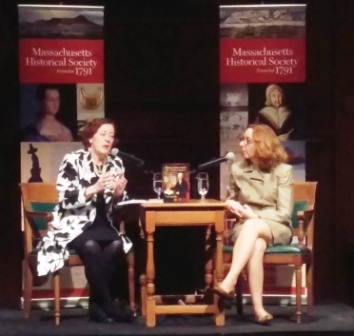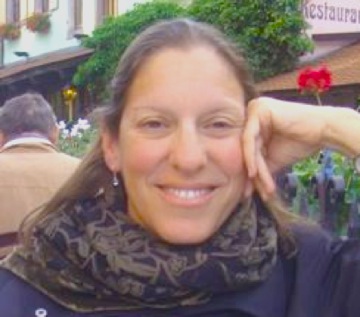By Conrad Edick Wright, Research
One of the happy consequences of the Massachusetts Historical Society’s centuries-long institutional stability has been its ability to carry out extended projects. It is not that we actively try to transform small, modest undertakings into ones that never end, but that we see our commitments through to their conclusion. Determination and persistence are our watchwords. The time horizon of most businesses is usually a matter of a few weeks, months, or years. Even well-endowed educational and cultural institutions rarely project their plans decades into the future. One of the Massachusetts Historical Society’s signature projects, however, Sibley’s Harvard Graduates, a multi-volume collected biography of the college’s alumni, has a history more than a century and three-quarters long, including more than 130 years as a formal MHS activity.
In the middle of the nineteenth century, no one expected that work on Sibley’s Harvard Graduates would still be underway today. To say that Sibley has proceeded by fits and starts would be a triumph of tact. Whether one dates the series from 1842 (the year that Harvard assistant librarian John Langdon Sibley [1804-1885] began to collect source materials for the series), 1859 (when he wrote the first entries), or 1873 (when he published the first volume), the undisputable fact is that the project has been underway for a very long time.
It goes without saying that everyone involved would prefer a more rapid rate of publication. The series was an ancillary responsibility when Sibley began to work on it some 176 years ago, however, and an ancillary responsibility it has remained. One of his many duties as assistant librarian was to maintain an up-to-date record of Harvard’s alumni. The college began no later than 1674 to publish an annotated broadside list of its graduates, Catalogus eorum qui in Collegio Harvardino . . . alicujus gradus laurea donate sunt, so in 1841, when President Josiah Quincy asked (or really instructed) Sibley to add the preparation of the list to his library responsibilities its form and nature were well established. The broadside appeared once every three years. To the extent possible, it included the Latinized names of the known graduates of the college—thus William Ames, A.B. 1645, became Gulielmus Amesius. Graduates who had achieved such honors as elevation to a major public office or admission to a significant cultural institution qualified for appropriate abbreviated notes recognizing these distinctions. When a graduate died, he did not disappear from the list; instead, a star next to his name marked his passing.
As Sibley accumulated reams of biographical information on Harvard men, friends began to urge him to make more of this data than the restricted space of the triennial broadside allowed. There were already models of collected biography to draw on, notably Athenae Oxonienses: An Exact History of All the Writers and Bishops Who Have Had their Education in the University of Oxford from 1500 to 1690 by Anthony Wood (1632-1695), but, model or not, preparing volumes of Biographical Sketches of Graduates of Harvard University, later known simply as Sibley’s Harvard Graduates, still proved to be a time consuming task. Shortly before Sibley’s death in 1885, he completed his third and final volume; he had taken his story from Harvard’s first graduating class in 1642 through the class of 1689. All told, he had written entries on 301 graduates. Some sketches, on subjects about whom little was known, were only a few paragraphs long. In contrast, the entry on the Puritan minister Cotton Mather, A.B. 1678, no doubt colonial America’s most prolific author, ran 153 pages, including a list 117 pages long of his 456 works.
John Langdon Sibley and his wife, Charlotte, lived with unusual frugality; at his death, after providing for Charlotte, he pledged to the Society about $150,000, to that point its largest bequest. Although the legacy could be used for a number of different purposes, the continuation of Sibley’s Harvard Graduates was the closest to his heart. Nearly half a century passed before another scholar, Clifford K. Shipton (1902-1973), resumed the series. Between 1930, when Shipton began the work, and the posthumous publication of volume 17 in 1975, he prepared fourteen volumes of sketches, a massive achievement that carried the project from the class of 1690 through the class of 1771. After a sixteen-year pause, work on the series resumed in 1989. Volume 18 appeared in 1999. Publication of volumes 19 and 20 is in progress, and research and writing for volume 21, which will take the series through the class of 1784, is far along.
From time to time, scholars and administrators at other American colleges have toyed with the possibility of undertaking their own counterpart to Sibley and two institutions have produced valuable reference tools. Between 1885 and 1912, Franklin Bowditch Dexter (1842-1920) brought out six volumes of entries on Yale alumni from the school’s founding in 1701 through the class of 1815. At Princeton, between 1976 and 1991, a team of scholars issued five volumes of sketches of that college’s graduates and non-graduates through the class of 1794. In 2005, the MHS and the New England Historic Genealogical Society brought out a CD-ROM, Colonial Collegians: Biographies of Those Who Attended American Colleges before the War for Independence, that collected all the Harvard, Yale, and Princeton entries through the class of 1774, together with parallel material on the graduates of William and Mary, Columbia, the University of Pennsylvania, Brown, Dartmouth, Rutgers, the medical schools at Penn and Columbia, and William Tennant’s Log College, a Presbyterian seminary.
Recent Sibley volumes, both published and in the works, as well as Colonial Collegians testify to the Society’s belief that even after well over a century it has not quite satisfied its commitment to John Langdon Sibley and his Harvard graduates. In the coming years, look for more Sibley volumes in print, including those now in press. And look for Colonial Collegians, currently available in our reading room as a CD-ROM, to be accessible one day as a free reference source on the MHS’s website.



 Martha Hodes
Martha Hodes Marian Hooper Adams was nicknamed “Clover” by her mother, who felt that her daughter’s birth was a lucky occurrence. Born into a wealthy, prominent Boston family, Clover was raised in privilege and highly educated. Her mother died when she was five, but Clover remained very close to her father for the rest of her life. In 1872, at the age of 28, she married the historian Henry Adams, who was teaching at Harvard. After five years they moved to Washington, DC, residing near the White House, and began hosting an exclusive salon of politicians, writers, and thinkers. Despite this stimulation, Clover and Henry were bored, and the spark went out of their marriage. Their problems intensified due to the fact that they were unable to have children.
Marian Hooper Adams was nicknamed “Clover” by her mother, who felt that her daughter’s birth was a lucky occurrence. Born into a wealthy, prominent Boston family, Clover was raised in privilege and highly educated. Her mother died when she was five, but Clover remained very close to her father for the rest of her life. In 1872, at the age of 28, she married the historian Henry Adams, who was teaching at Harvard. After five years they moved to Washington, DC, residing near the White House, and began hosting an exclusive salon of politicians, writers, and thinkers. Despite this stimulation, Clover and Henry were bored, and the spark went out of their marriage. Their problems intensified due to the fact that they were unable to have children. Clover had always been interested in art and she found an outlet for her frustrations in a new camera in 1883. She learned the painstaking development process and began to take photographs of people, landscapes, and animals (she was a great lover of dogs and horses). Although a few of her photographs show traces of humor, including those of her dogs posed at a table set for tea, many of Clover’s photographs convey the melancholy and isolation of her own experience.
Clover had always been interested in art and she found an outlet for her frustrations in a new camera in 1883. She learned the painstaking development process and began to take photographs of people, landscapes, and animals (she was a great lover of dogs and horses). Although a few of her photographs show traces of humor, including those of her dogs posed at a table set for tea, many of Clover’s photographs convey the melancholy and isolation of her own experience.